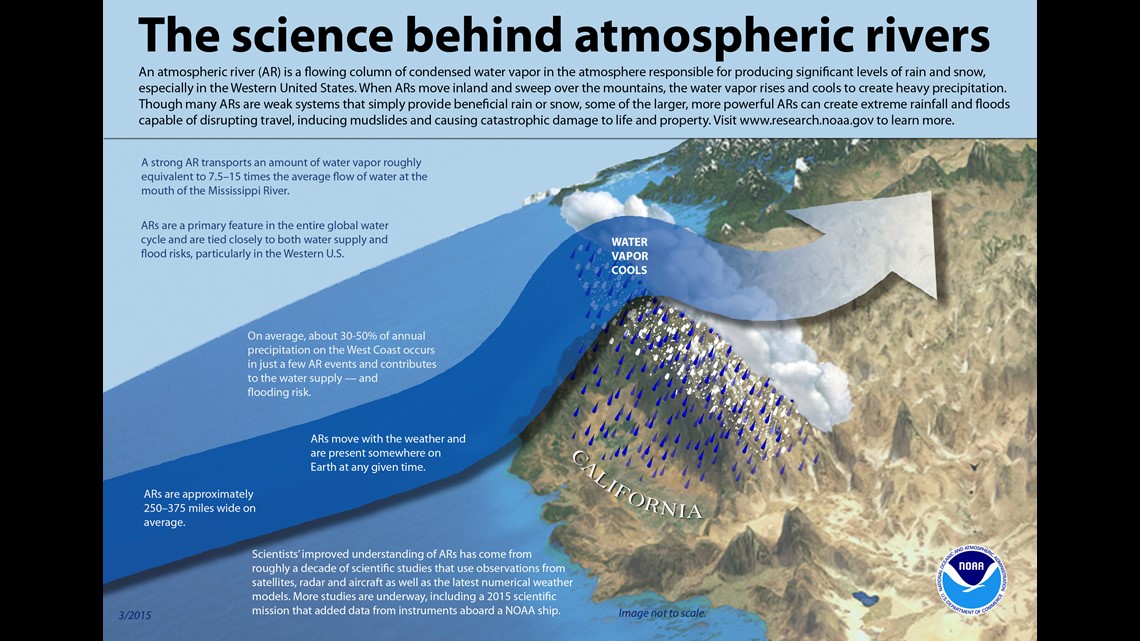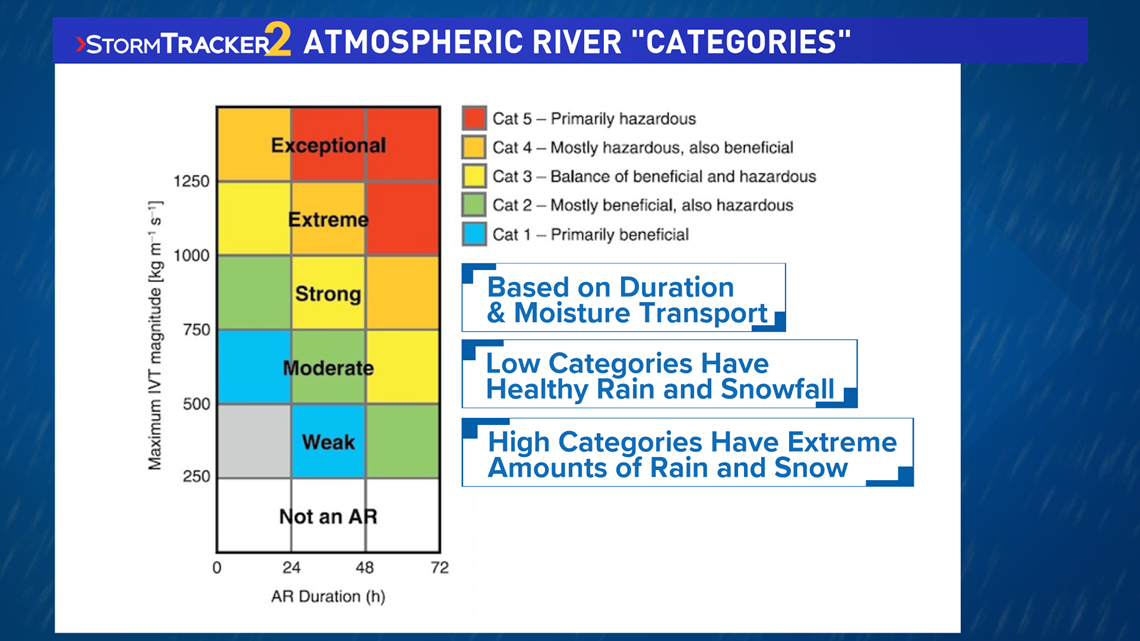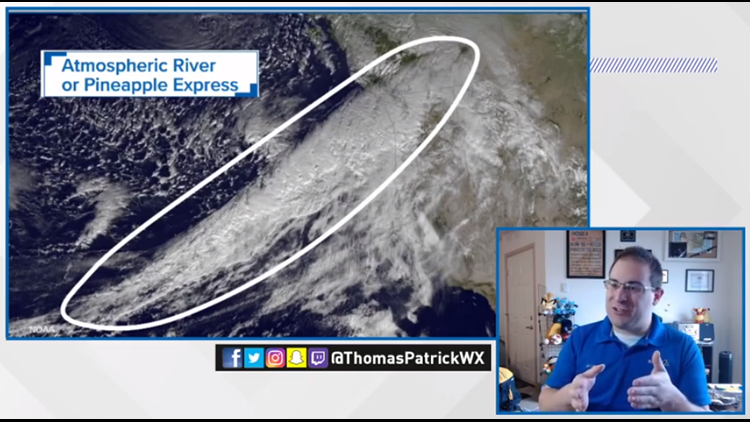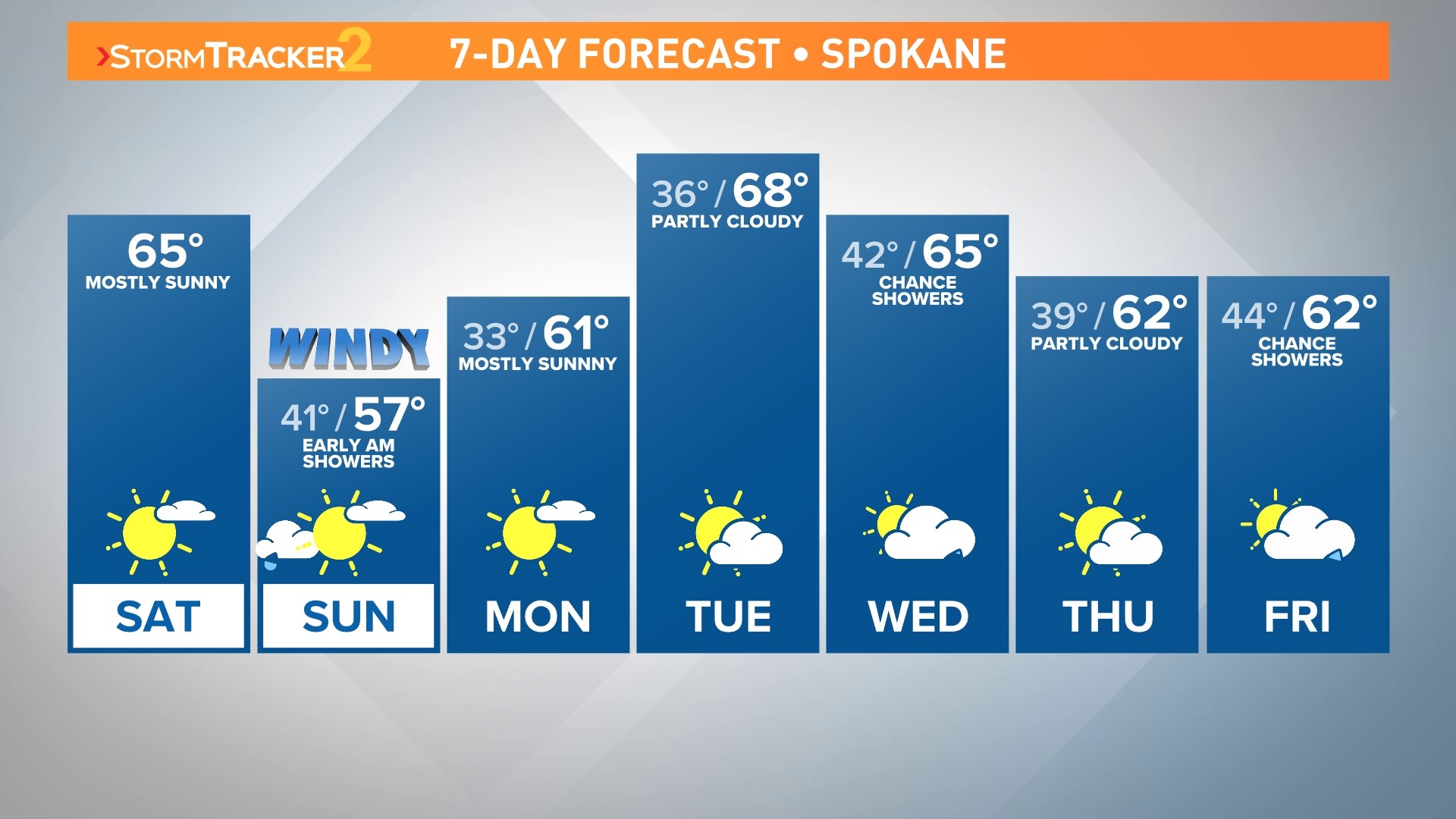SPOKANE, Wash. — In the Fall and Winter months, the western U.S. tends to experience a weather phenomenon known as a "Atmospheric River."
The term itself is self-explanatory. The atmospheric itself can create narrow moisture transport that resembles a river.
The most common variation of this is when tropical moisture from near Hawaii is siphoned by the low level jet stream and is then aimed towards the western U.S. The moisture rich region of the atmosphere then deposits the rain and mountain snow on shore.
This is amplified by the western U.S. topography, with high mountain ranges of the rock mountains acting to squeeze out as much precipitation as possible during these atmospheric river events.


It's also known as the "Pineapple Express."
These events can supply a fraction or nearly an entire season's worth of precipitation in a matter of a few days depending on the strength and duration.
In 2019, meteorologists started to experimentally label Atmospheric Rivers into "Categories" not unlike what we use for hurricane categories.


The categories range from one to five, with five being the strongest. But unlike hurricanes, where even a Category 1 hurricane can be dangerous, atmospheric rivers have both beneficial and hazardous implications.
For the west coast, which can often experience drought conditions, the added rain and mountain snow pack can be very healthy for the region. But when these atmospheric river event turn extreme, that's when too much rain and too much snow can lead to weather hazards such as flooding, debris flows, and avalanches.
Weather Classroom is produced and broadcasted by KREM Meteorologist Thomas Patrick is you can watch and chat live on his Facebook page Thursdays at 1 p.m. Pacific Time.



